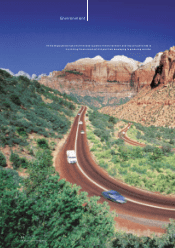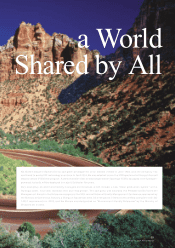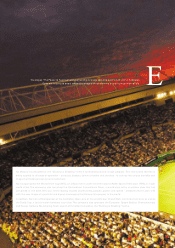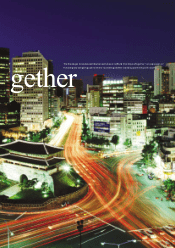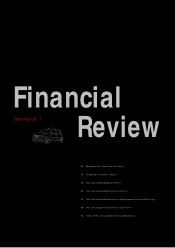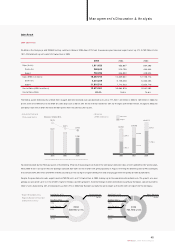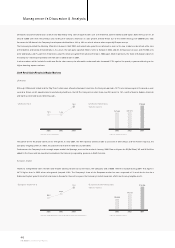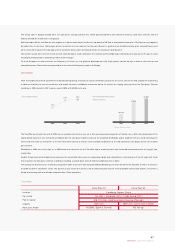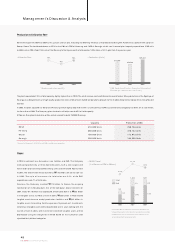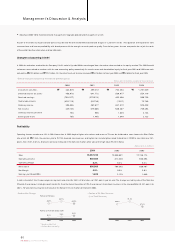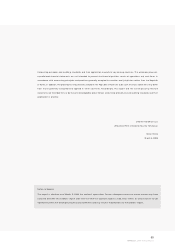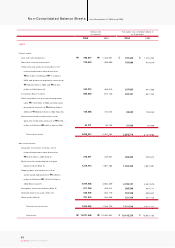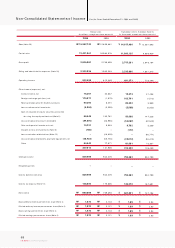Kia 2004 Annual Report Download - page 48
Download and view the complete annual report
Please find page 48 of the 2004 Kia annual report below. You can navigate through the pages in the report by either clicking on the pages listed below, or by using the keyword search tool below to find specific information within the annual report.
48
KIA Motors_2004 Annual Report
Production & Utilization Rate
Domestic output for 2004 was 906K units, up 6.2% year on year, excluding the Morning (Picanto) units produced at Donghee Automotive, a partner with a plant in
Seosan, Korea. The total breaks down as 251K units at Sohari, 470K at Hwasung, and 185K at Gwangju, which saw its annual plant capacity expand from 210K units
to 350K units in 2004. Add 114K units of the Morning to the figure, and the total reaches 1.02 million, a 19.5% gain from the previous year.
The plants operated at 76% of total capacity, slightly higher than in 2003. The small increase can be attributed to several factors: Mass production of the Sportage at
Gwangju was delayed to ensure high quality, production lines at Sohari were halted temporarily to prepare for the models designed to replace the existing Rio and
Carnival.
In 2005, the plant capacities at Sohari and Hwasung w ill be slightly adjusted in terms of units per hour (UPH), but overall annual capacity has been set at 1.25 million,
sim ilar to that of 2004. The Company plans to raise its utilization rate to 85% of total capacity.
At Seosan, Donghee Automotive will be com m issioned to build 150,000 Mornings.
Capex
In 2004 investment was focused on new facilities and R&D. The Com pany
increased productivity at three domestic plants, built a new engine and
transmission plant and expanded existing ones and enhanced R&D for new
models. The total investment amounted to ₩1.42 trillion, almost the sam e as
in 2003. The ratio of investment to total sales was 9.3%, while R&D
expenditures were 7% of total sales.
Overseas, the Company invested ₩113 billion to finance the ongoing
construction of its Slovakia plant. Out of the Company's total investm ent for
2004, nearly W1.18 trillion was capitalized, which break down as ₩295 billion
in intangible assets for R&D of new models, ₩533 billion in R&D-related
tangible assets for new model production facilities, and ₩349 billion in
tangible assets for existing facility expansion/improvement. Investments
entered as intangible assets will be depreciated over 3 years starting with the
launch of new models, and investments deemed tangible assets will be
depreciated using the straight line method based on the number of years
stipulated for individual categories.
Management’s Discussion & Analysis
310,000 Units
590,000 Units
150,000 Units
350,000 Units
Capacity Production (2004)
250,753 Units
470,142 Units
113,913 Units
184,558 Units
Sohari
Hwasung
Seosan
Gwangju
• Utilization Rate • Production (Units)
* OEM Production(Picanto - Donghee Automotive)
Excluded ('03 199 units, '04 113,913 units)
* Based on production capability
2002
76%
2003
74%
2004
76%
2002
872,086
2003
852,598
2004
905,453
*Annual Full Capacity 1,250,000 Units (OEM plant(Seosan) excluded)
• CAPEX Trend
(% of Revenue, KRW in Billions)
6.1%
11.1%
9.3%
2002
741
2003
1,422
2004
1,421
232
PP&E
R&D
509
413
1,009
349
1,072
* Increased R&D investments for product developm ent
* Expanding engine & transm ission production facilities
* PP&E investm ent for overhaul & rationalization of all
plants (especially Gwangju plant)


